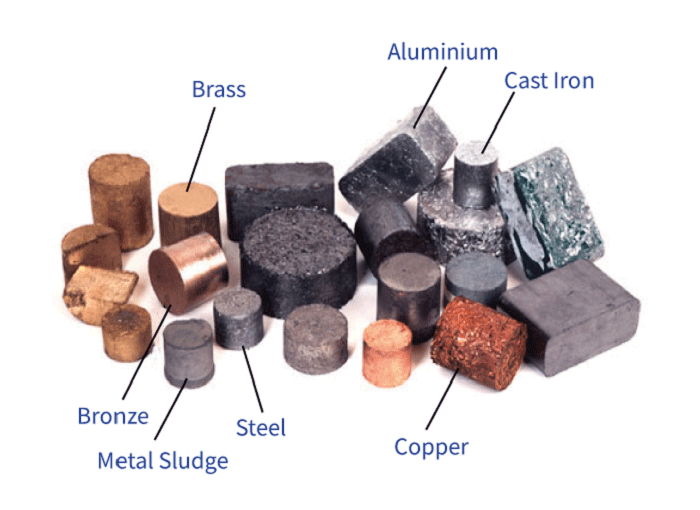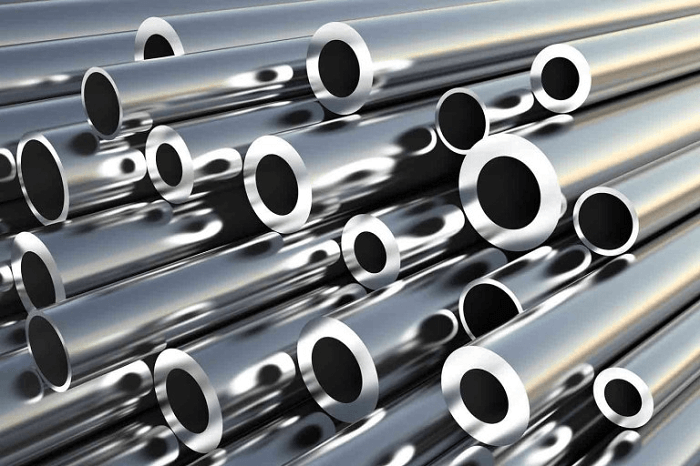Metal DefinitionThe origin of metals is a complex and multi-disciplinary scientific field that involves various aspects of astrophysics, geology, and materials science. The formation and evolution of metals can be understood by studying the universe's history, the Earth, and its mantle. The universe is believed to have been formed about 13.8 billion years ago through a process known as the Big Bang. The universe was filled with a hot and dense plasma of hydrogen and helium during this process. Over time, the universe expanded and cooled, leading to the formation of the first stars. These stars were massive and short-lived, burning their fuel rapidly and producing heavy elements such as carbon, nitrogen, and iron through nucleosynthesis. When these stars eventually exploded as supernovae, they scattered these heavy elements into space, forming clouds of gas and dust. 
Around 4.6 billion years ago, the solar system was formed from one of these clouds of gas and dust. The Sun and the planets formed from the densest regions of this cloud, while the asteroids and the comets formed from the less dense regions. The Earth was formed from a mixture of rock-forming elements, such as silicates, and metal-rich elements, such as iron and nickel. The Earth's mantle, which makes up the majority of its volume, is thought to be made up of peridotite, a dense and partially molten rock that contains a large amount of iron and magnesium. The origin of metals on the Earth can be traced back to the process in the Earth's mantle. During the early stages of the Earth's history, the mantle was hot and partially molten, allowing heavier elements, such as iron and nickel, to sink towards the Earth's centre and form its core. As the Earth cooled, the mantle solidified, and the metals were trapped within it. Over time, the Earth's mantle has undergone various geological processes, such as plate tectonics, which have caused the release of these metals through volcanic activity. Volcanic eruptions bring the metals from the mantle to the surface, where they are exposed to the atmosphere and can be mined for use in various applications. The discovery of metals and their properties was one of the most important developments in human history. Humans have used metals for thousands of years, and they have played a significant role in the development of various civilizations. The Bronze Age, which lasted from 3000 BC to 1200 BC, was characterized by the widespread use of bronze, an alloy of copper and tin, for making weapons, tools and jewellery. The Iron Age, which began in the 12th century BC, was characterized by the widespread use of iron, which was stronger and more durable than bronze, for making weapons and tools. DefinitionMetal is a chemical element characterized by its metallic bonding, high thermal and electrical conductivity, and distinctive lustre. It is a solid material typically hard, dense, and shiny and a good conductor of electricity and heat. Most metals are malleable and ductile, meaning they can be easily shaped and bent without breaking, making them ideal for various applications, such as construction, electronics, transportation, and jewellery. Metals are defined as elements with many electrons in their outermost energy level, known as the valence electrons. These electrons are involved in metallic bonding, a chemical bond that shares the electrons between multiple metal atoms, forming a sea of delocalized electrons. This type of bonding allows metals to have high electrical and thermal conductivity, giving them their distinctive lustre. Metals can be found in their pure form or as alloys, mixtures of two or more elements, at least one of which is a metal. Alloys enhance certain properties of metals, such as strength, hardness, and corrosion resistance, making them ideal for use in various applications. 
Types of MetalsMetals are elements characterized by their high conductivity, reflectivity, and malleability. They are abundant in the Earth's crust and play a crucial role in our daily lives, from construction materials to electronics and medical devices. There are many different types of metals, each with unique properties and uses.
Metals play a crucial role in our daily lives, from construction materials to electronics and medical devices. There are many different types of metals, each with unique properties and uses, from strong and durable ferrous metals to lightweight and corrosion-resistant non-ferrous metals, rare and valuable precious metals, and high-temperature refractory metals. Understanding the properties and uses of different metals is important for various industries and applications. Property of MetalsMetals are elements characterized by their high conductivity, reflectivity, and malleability. These properties are due to the arrangement of electrons in the outermost energy level, known as the valence electrons. In metals, the valence electrons are not tightly held to any particular atom but instead form a sea of electrons that allows for the easy flow of electrons and the ability to conduct electricity.
ConclusionThe origin of metals is a complex and fascinating field of study that involves the study of the history of the universe, the Earth, and its mantle. The metals we use today were formed in the early stages of the universe and brought to the surface through geological processes on the Earth. The discovery and use of metals have played a significant role in the development of human civilization, and they will continue to play an important role in the future. Metals have a variety of properties that make them useful for a wide range of applications. These properties are density, conductivity, reflectivity, malleability, tensile strength, corrosion resistance, ductility, and hardness, depending on the type of metal and its composition. Understanding the properties of metals is important for the selection of materials for specific applications, as well as for the development of new technologies and products.
Next TopicPharmacology Definition
|
 For Videos Join Our Youtube Channel: Join Now
For Videos Join Our Youtube Channel: Join Now
Feedback
- Send your Feedback to [email protected]
Help Others, Please Share









